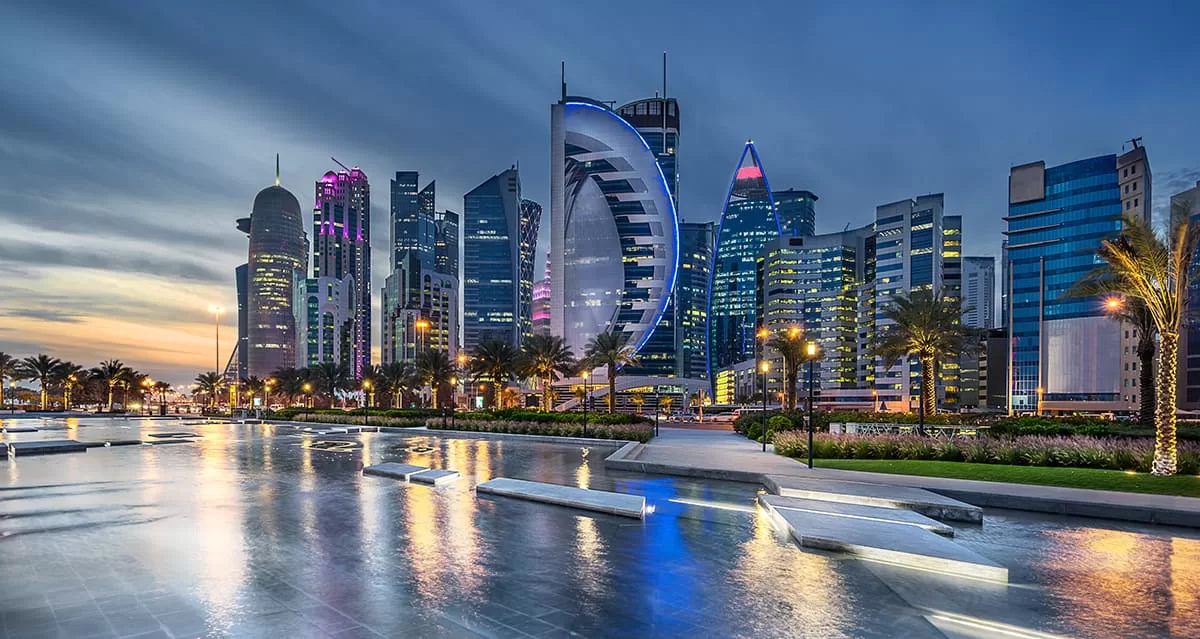Global Finance’s Safest Bank rankings, published annually in November, assess the fiscal health and stability of the largest 1,000 banks in the world. Where do Qatar’s banks rank? Overall, very well, with five banks holding seven places in all across our various Safest Bank lists.
Qatar is one of the safer, stable and prosperous countries in the Middle East. The country has a sophisticated banking system that provides both Islamic and conventional banking services and has eight banks in the top 1,000 safest banks. The banking system supports the country’s economy, with oil and gas serving as Qatar’s backbone. The QIA started acquiring equity ownership in all domestic banks listed on the Qatar Exchange and has ownership shares in the eight banks among the world’s 1,000 largest. The country is working to diversify its economy and has created emerging opportunities in technology, manufacturing, and agriculture, for example.
Oil revenues have fueled Qatar’s sovereign wealth fund, the Qatar Investment Authority (QIA), which holds over $500B USD in assets today, according to the Sovereign Wealth Fund Institute. Revenues from the oil and gas industry as well as investment income from the QIA have generated a budget surplus for the Qatari government. As a result, ratings agencies have assigned strong investment grade sovereign ratings to Qatar: AA from S&P and AA- from Fitch. In January, Moody’s gave the country its first upgrade since 2007, to Aa2. Bank ratings swing with their country’s sovereign rating, and next year’s Safest Banks list will likely see improved scores for Qatari banks.
Our proprietary algorithm scores each bank based on its ratings from top global agencies—Fitch, Moody’s, S&P—to identify the safest 100 worldwide. Additional rankings include Safest Commercial Banks, Safest Emerging Markets Banks, Safest Islamic Banks, and more. Bank ratings data are valid as of August 2023. Global Finance’s scores for the eight Qatari banks ranged from 9.5 to 18. Ratings were valid as of August 2023.
Qatar National Bank
Qatar National Bank (QNB) is one of the safest banks in the Middle East, ranking 43rd among the Safest Commercial Banks worldwide and 14th among Safest Emerging Market Banks. QNB is also one of the largest banks in the region, with over $325 billion in assets, and ranks second in our list of Safest Banks in the Middle East. The bank has an ownership structure split 50% to each QIA and the private sector. While QNB’s operations expand beyond Qatar, QNB has helped Qatar transform from a traditional commodity-based economy to a global powerhouse.
Qatar Islamic Bank
Within the Islamic banking sector, Qatar Islamic Bank is the region’s safest Islamic bank and the largest Islamic bank in Qatar, with about QAR 189.2 billion in assets. It also makes the top 50 Safest Emerging Market Banks, coming in at No. 43.
Dukhan Bank
Dukhan Bank is one of Qatar’s largest Sharia-compliant banks and the third largest bank in the country. The bank has QAR 75.4 billion in assets and is about 43% government owned. It is among the 100 Safest Emerging Market Banks and in the top 10 of Safest Islamic Banks in the Middle East.
Qatar International Islamic Bank
Qatar International Islamic Bank offers products tailored to corporations and high-net worth clients. The Sharia-compliant bank is privately owned, with QIA holding a 16% stake, and has a presence in Morocco. It is also among the 100 Safest Emerging Market Banks, and the top 10 Safest Islamic Banks in the Middle East.
Masraf Al Rayan
Of the world’s largest 1,000 banks, Masraf Al Rayan is the second largest Islamic bank in Qatar and about 33% government owned. The bank squeaks into the 100 Safest Commercial Banks, at No. 95. The bank offers Sharia-compliant products and services to retail, corporate, and private banking sectors. The bank is only rated by Moody’s.
